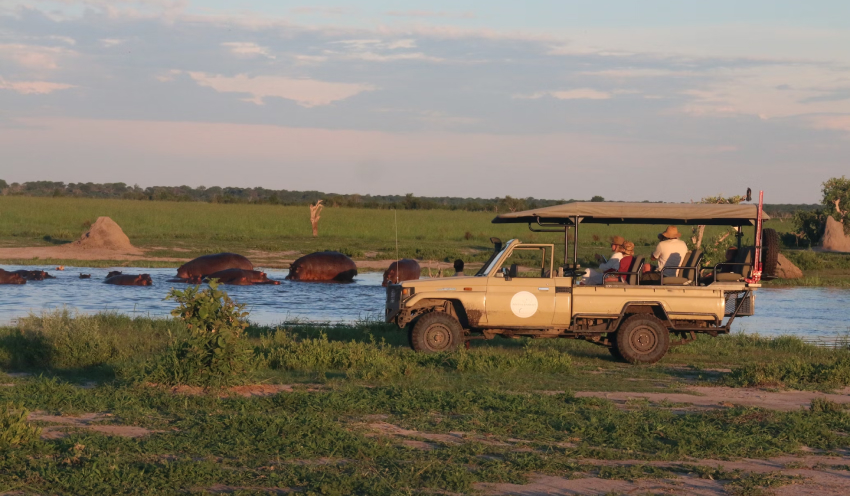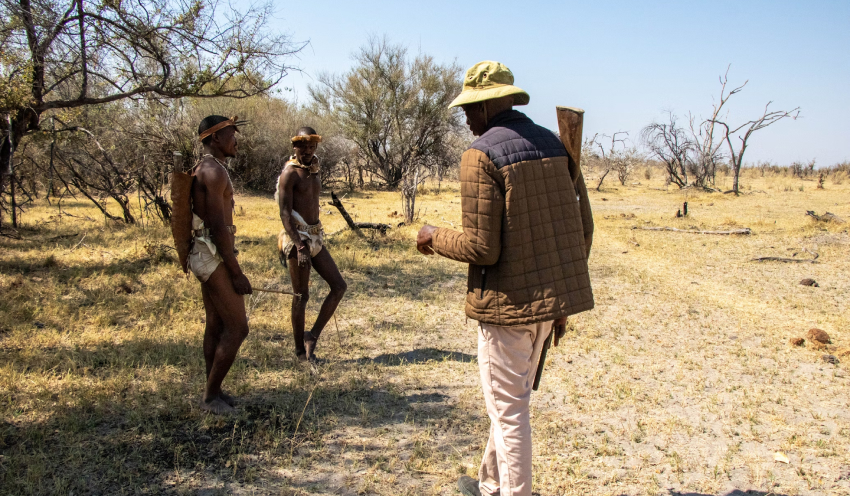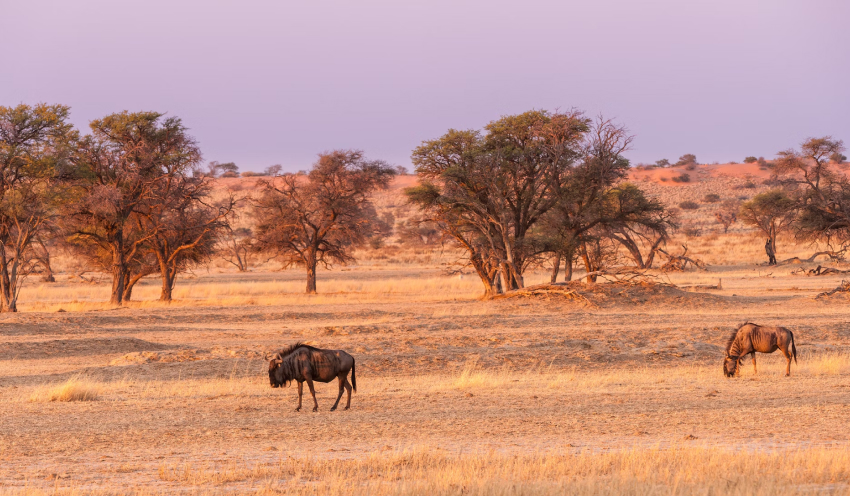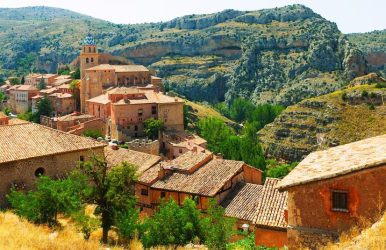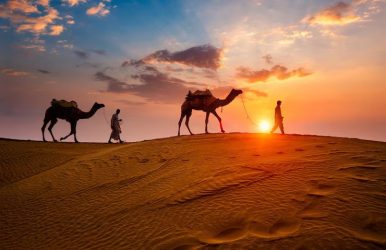Ten Things You Must Do When Visiting California
BY Ankita Dec 12, 2023
Welcome to the Golden State! California, a land of dreams and diverse landscapes, beckons travelers with its unique attractions. From the star-studded streets of Los Angeles to the serene beaches of San Diego, every corner tells a story. Whether you're a culture enthusiast or a nature lover, this golden state has something for everyone. In this guide, we'll explore the top ten must-do activities that capture the essence of California. Experience San Diego's Coastal Beauty San Diego's coast is a treasure trove of natural beauty. Begin at La Jolla Cove, known for its crystal-clear waters and vibrant marine life. Perfect for snorkeling and kayaking, it's a paradise for water sports enthusiasts. Then, visit Coronado Beach, famed for its golden sands and iconic Hotel del Coronado. It's ideal for a relaxing day by the sea. Cultural and Wildlife Exploration Next, explore Balboa Park, a cultural hub with museums, gardens, and the renowned San Diego Zoo. This zoo is home to over 3,500 animals and is a leader in conservation efforts. Balboa Park's Spanish Colonial architecture adds to its charm, making it a must-visit for both nature and culture lovers. Explore the Vibrant City of Los Angeles A shuttle from San Diego to Los Angeles ensures a smooth and comfortable journey. This convenient service links the coastal charm of San Diego with LA's vibrant heart, making travel between these cities effortless and enjoyable. Hollywood's Glamour and Arts In Los Angeles, the allure of Hollywood awaits. Visit the iconic Hollywood Walk of Fame and find stars of your favorite celebrities. The city's rich cultural scene is also a highlight. Don't miss the Getty Center and the Los Angeles County Museum of Art (LACMA). Their impressive collections range from contemporary art to historical masterpieces. Beaches and Scenic Views Los Angeles is also famous for its stunning beaches. Venice Beach is known for its lively boardwalk, eclectic street performers, and vibrant atmosphere. For a more laid-back experience, Santa Monica Beach offers serene sunsets and a picturesque pier. These beaches embody the diverse and dynamic spirit of Los Angeles. Take a Scenic Drive on the Pacific Coast Highway The Pacific Coast Highway (PCH) offers one of the most breathtaking drives in the world. Stretching along California's coastline, this route is a visual feast. Start your journey in Southern California and witness the seamless blend of ocean views and rugged cliffs. Must-See Stops Along the Way As you drive north, there are several must-see stops. Near Los Angeles, the Getty Villa in Malibu showcases ancient art in a stunning setting. Further along, Santa Barbara's charm is undeniable with its Spanish architecture. The PCH also leads to the dramatic landscapes of Big Sur, a highlight for any traveler. A Journey to Remember This drive isn't just a means to an end; it's an experience in itself. Each turn brings new sights, from hidden coves to sprawling vineyards. The Pacific Coast Highway is more than just a road; it's a journey through California's heart. Discover the Magic of Disneyland in Anaheim Disneyland in Anaheim is a magical destination for visitors of all ages. Known as the "Happiest Place on Earth," this theme park brings fairy tales and beloved characters to life. The enchanting atmosphere and timeless attractions create memories that last a lifetime. Iconic Attractions and Experiences The park boasts classic rides like Space Mountain and Pirates of the Caribbean. Don't miss the newer additions, such as Star Wars: Galaxy's Edge, where the Star Wars universe comes alive. Each land in Disneyland offers unique experiences, from the whimsical Fantasyland to the adventurous Frontierland. More Than Just Rides Disneyland is more than just its rides. The parades, live shows, and fireworks are spectacular. Meet your favorite Disney characters, savor themed dining experiences, and immerse yourself in the meticulous details of the park's design. A Day of Fun and Magic A day at Disneyland is a journey into a world where imagination reigns supreme. Whether you're a first-time visitor or a lifelong fan, the magic of Disneyland in Anaheim is an essential California experience. Walk Across the Golden Gate Bridge in San Francisco The Golden Gate Bridge, an engineering marvel, is a must-visit landmark in San Francisco. Stretching across the San Francisco Bay, it offers spectacular views and a memorable experience. Walking across this iconic bridge provides a unique perspective of the city and the bay. Breathtaking Views and Photo Opportunities The bridge's pedestrian walkway is perfect for a leisurely stroll or an energetic walk. Along the way, you'll find unparalleled views of the San Francisco skyline, Alcatraz Island, and the Pacific Ocean. Don't forget your camera; this is a photographer's paradise. Exploring Nearby Attractions After crossing the bridge, explore the surrounding areas. Visit the historic Fort Point, nestled beneath the bridge, or relax in the nearby Crissy Field with its beautiful beachfront. These spots offer a serene escape from the city's hustle and bustle. A San Francisco Essential The experience of walking across the Golden Gate Bridge embodies the spirit of exploration and beauty that defines California. It's an essential part of any visit to San Francisco, capturing the essence of this vibrant city. Enjoy Wine Tasting in Napa Valley Napa Valley is a paradise for wine enthusiasts. This region, renowned for its world-class vineyards and wineries, offers an unforgettable experience. From cabernet sauvignon to chardonnay, the variety of wines to taste is vast. Picturesque Vineyards and Wineries Napa's landscape is dotted with picturesque vineyards. Many wineries offer tours, allowing visitors to learn about winemaking processes and the history of this rich region. The welcoming tasting rooms and knowledgeable staff make each visit both educational and enjoyable. Gourmet Dining and Local Delights Complement your wine tasting with Napa Valley's gourmet dining scene. The area boasts an array of top-notch restaurants and cafes, many of which use locally sourced ingredients. Enjoy a meal amidst the beautiful vineyard settings. A Relaxing and Luxurious Experience Spending a day in Napa Valley is not only about wine tasting but also about soaking in the tranquil and luxurious atmosphere. The rolling hills and serene landscapes provide a perfect backdrop for a relaxing getaway. Adventure in Yosemite National Park Yosemite National Park, a UNESCO World Heritage Site, is a haven for nature enthusiasts. Its breathtaking landscapes range from vast meadows to towering granite cliffs. Yosemite's beauty is a testament to the wonders of the natural world. Hiking and Outdoor Activities The park offers a range of outdoor activities, with hiking trails for all skill levels. Whether it’s the challenging Half Dome hike or a leisurely stroll in the Valley, there's something for everyone. Don't miss the chance to see the majestic Yosemite Falls, one of the tallest waterfalls in North America. Captivating Wildlife and Scenic Views Yosemite is home to diverse wildlife, including black bears, deer, and numerous bird species. The park’s scenic drives, like Glacier Point Road, offer panoramic views of the Sierra Nevada Mountains. These drives are perfect for those looking to experience Yosemite's grandeur comfortably. Camping and Stargazing For a complete Yosemite experience, consider camping under the stars. The park's clear night skies offer exceptional stargazing opportunities. It’s a magical way to end a day of adventure in one of California's most beloved natural landscapes. Experience the Nightlife and Culinary Scene in Los Angeles Los Angeles offers endless entertainment options. From rooftop bars to underground music venues, the city buzzes with energy after dark. Experience the glamour of Hollywood nightclubs or the laid-back vibe of beachside lounges. Culinary Adventures LA's culinary scene is as diverse as its population. Savor the flavors of world-class sushi, authentic Mexican tacos, or innovative fusion cuisine. The city's food trucks and farmers' markets are also worth exploring for a taste of local delights. Live Music and Performances Los Angeles is a hub for live music and performances. Catch a show at the famous Hollywood Bowl or explore the indie music scene in neighborhoods like Silver Lake. The city's theaters and comedy clubs also offer top-notch entertainment. A Melting Pot of Cultures Los Angeles' nightlife and dining experiences reflect its cultural diversity. Each neighborhood offers a unique flavor, making it an exciting exploration for night owls and foodies alike. Visit the Historic USS Midway Museum in San Diego The USS Midway Museum in San Diego offers a unique glimpse into naval history. This historic aircraft carrier, now a floating museum, allows visitors to explore the life of sailors at sea. It's an immersive experience that combines education with entertainment. Interactive Exhibits and Aircraft Displays The museum boasts an extensive collection of aircraft, ranging from World War II fighters to modern-day jet planes. Interactive exhibits allow visitors to engage with the ship's history, offering simulations and hands-on experiences. Guided Tours and Veteran Insights Guided tours led by knowledgeable volunteers, many of whom are Navy veterans, provide personal stories and insights. These tours offer a deeper understanding of the ship's role in U.S. naval history. A Must-See for History Enthusiasts Visiting the USS Midway Museum is a must for anyone interested in military history or maritime adventures. It's not only an educational experience but also a tribute to those who served in the U.S. Navy. Stroll Through the Bohemian Streets of Venice Beach in Los Angeles Venice Beach in Los Angeles is a hub of eclectic energy and bohemian spirit. A stroll down its famous boardwalk offers a unique blend of street performers, artists, and vendors. This lively area is a melting pot of cultures, art, and entertainment. Art and Street Murals The streets of Venice are adorned with vibrant murals and street art, showcasing the creative soul of the community. The famous Venice Beach Art Walls are a testament to the area's artistic heritage. Visitors are often captivated by the ever-changing canvas of graffiti and murals. Beachside Fun and Activities Venice Beach is not just about the boardwalk. The sandy beach is perfect for sunbathing, volleyball, or simply enjoying the Pacific Ocean views. The skate park and Muscle Beach outdoor gym are iconic spots, reflecting the active lifestyle of the locals. A Glimpse into LA’s Unique Culture A visit to Venice Beach offers a glimpse into a distinctive side of Los Angeles culture. It's a place where freedom of expression reigns, making it a must-visit for those seeking an authentic and unconventional LA experience. California's allure lies in its incredible diversity. From the serene beaches of San Diego to the bustling streets of Los Angeles, this state offers a multitude of experiences. Whether it's the thrill of Disneyland, the natural splendor of Yosemite, or the artistic vibe of Venice Beach, each destination tells a part of California's story. As you plan your trip, remember that California is more than just a checklist of attractions. It's a journey of discovery, where each location offers its own unique flavor and charm. The ten must-do activities highlighted in this guide are just the beginning of what this vibrant state has to offer. We hope this guide inspires you to explore the beauty and excitement of California. Whether you're a first-time visitor or a returning traveler, the Golden State always has something new and mesmerizing to offer. So pack your bags, and get ready for an unforgettable Californian adventure! Read Also: Loranocarter+California: Is It Worth Visiting The Place? Top 10 Affordable Hostels In Los Angeles – California 4 Unique Ways Of Enjoying Your Holiday In San Diego

